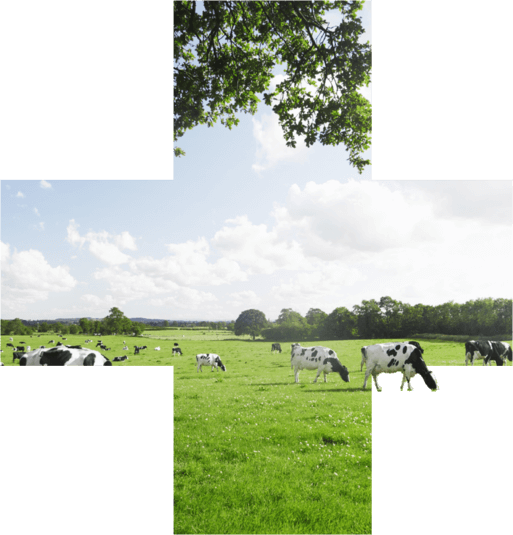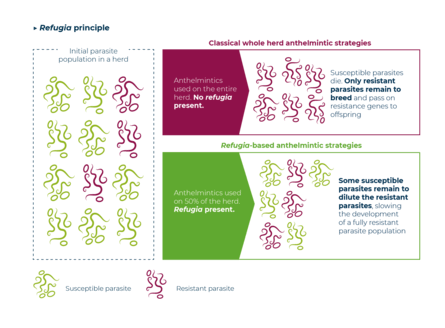Selective treatment strategies
Selective treatments are refugia-based strategies that can optimise the use of wormers while slowing down the development of resistance.

Refugia-based strategies
Refugia-based strategies
To preserve efficacy of the wormers (anthelmintics) currently available, one effective strategy proposed by researchers and studied through several EU-projects (PARASOL, GLOWORM) is the maintenance of a parasite population in refugia, which means deliberately not exposing a proportion of the parasite population to anthelmintic treatment. The progeny from unexposed parasites then provide a source of non-resistant worms that can dilute the population of resistant worms that survive anthelmintic treatment, and hence reduce the rate of resistance development (Kenyon et al., 2009; Charlier et al.,2014b).
Selective treatments are refugia-based strategies that can optimise anthelmintic treatments while slowing down the development of resistance.

Selecting the right animals to treat
Selecting the right animals to treat
Selective treatments can be defined as strategies to identify the individual animals that require and would benefit from treatment within a group. This selection can be supported by a single treatment indicator or combination of indicators, to provide epidemiological and/or production benefits.
There are different approaches to selective treatment so there is flexibility between herds in the field.
See our beprecise video about how to implement a simple selective treatment strategy and its benefits.

beprecise guidelines on selective treatment


